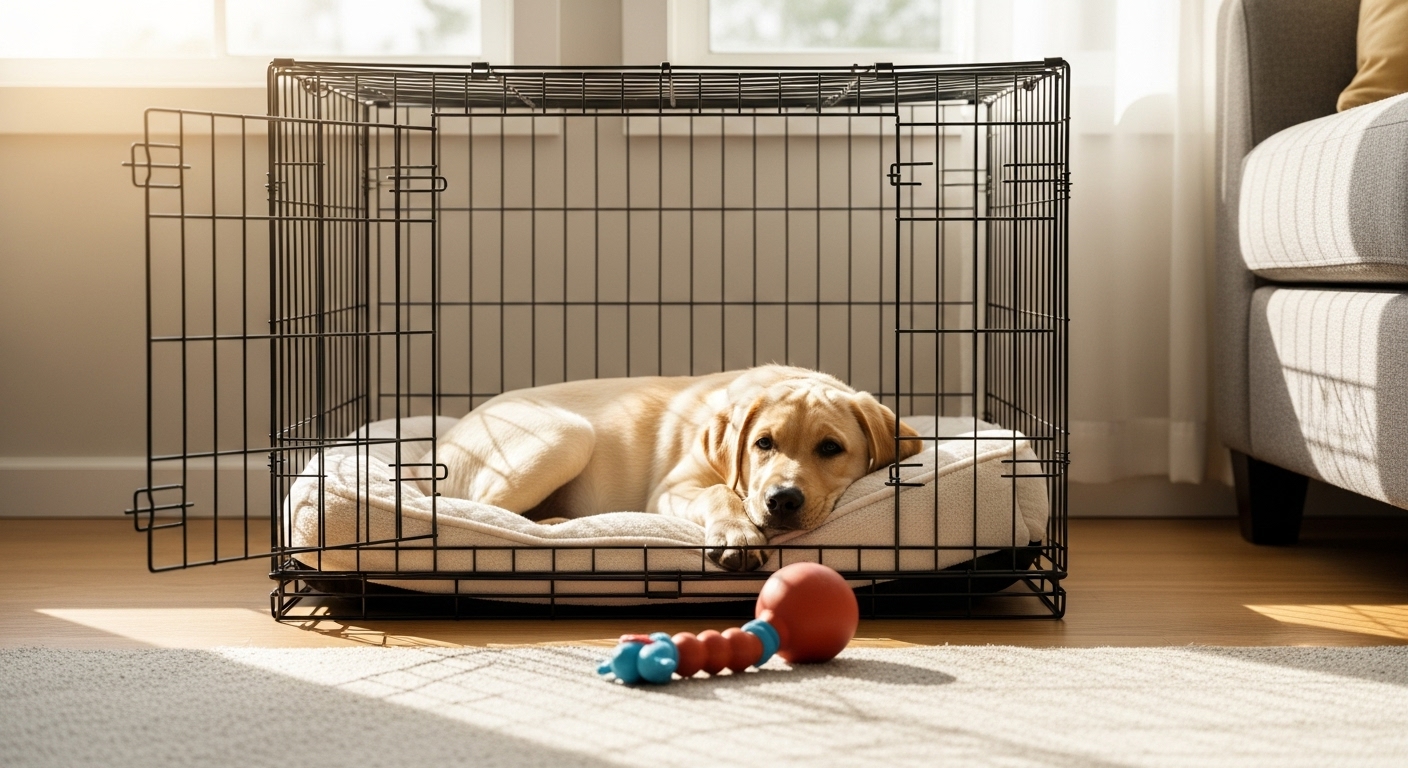A well-implemented crate can be your dog’s safe haven—a cozy retreat where they feel secure, learn bladder control, and rest peacefully. With patient, step-by-step guidance and reward-based methods, you can create a positive association so your dog happily “opts in” to their den. Let’s transform that crate from a puzzle to a prized spot!
1. Why Crate Training Matters
- Safety & Security: Dogs are den animals by nature; a crate taps into their instinct to seek a protected space.
- Housebreaking Helper: Puppies learn bladder control faster when they avoid soiling their den.
- Prevents Destructive Behavior: A contained environment keeps teething pups and bored dogs from chewing or escaping.
- Travel & Vet Visits: Familiarity with a crate reduces stress during car rides or boarding.
2. Preparing the Perfect Crate Setup
- Right Size: Big enough for your dog to stand, turn around, and lie down, yet cozy—too much extra space reduces the den effect.
- Soft Bedding: Use a washable mat or bed—avoid loose blankets that could pose a chew hazard for puppies.
- Open & Inviting: Place the crate in a frequently used area (living room, bedroom) so your dog feels part of the family.
- Toys & Treats: Reserve special puzzle toys or high-value treats exclusively for crate time.
3. Step-by-Step Crate Introduction
🐾 Step 1: Create Positive First Impressions
- Leave Door Open: Let your dog explore freely—never force them inside.
- Scatter Treats: Toss treats just inside the threshold and deeper, praising each approach.
- Meal Time in Crate: Begin feeding your dog’s regular meals (or breakfast/dinner) near, then inside the crate to build good vibes.
🐾 Step 2: Build Comfort & Endurance
- Short Confinements: After meals, close the door for 30 seconds while you sit nearby.
- Mark & Reward: Open the door before your dog whines; reward calm waiting with a treat or praise.
- Gradually Increase Duration: Add 30 seconds to a minute each session—always ending before signs of stress.
🐾 Step 3: Add Distance & Distractions
- Step Away Briefly: Once your dog stays calm for 5 minutes, step out of sight for a few seconds, then return and reward.
- Increase Freedom: Practice while you move around the room—fold laundry or work at a desk.
- Random Crate Time: Encourage voluntary crate time with puzzle toys or Kongs stuffed with wet food or peanut butter.
4. Handling Whining & Anxiety
- Ignore Attention-Seeking Whines: If you’ve just started and your dog is settled, wait 5–10 seconds of silence before rewarding.
- No Freeing on Whine: Releasing your dog while they’re upset reinforces that whining makes the door open.
- Calm Exits & Entries: Keep arrivals and departures low-key—no party celebrations or stern lectures.
5. Crate Training Troubleshooting
| Issue | Strategy |
|---|---|
| Refusal to Enter | Use high-value “crate only” treats deeper inside |
| Puppy Whining | Ensure bathroom breaks before crating; very short sits |
| Adult Dog Anxiety | Increase enrichment toys; try gentle classical music |
| Broken Crate Bars/Chewing | Offer durable chew toys outside crate; supervise closely |
6. Beyond Basics: Making It Routine
- Nap & Night Routine: Crate your dog at bedtime with a soft toy—maintain consistent evening cues.
- Travel Practice: Place the crate in the car (engine off) and feed treats inside to generalize den comfort.
- “Crate” Cue Word: Teach “Crate” as a verbal cue, pairing it with luring and rewarding inside so your dog enters on command.

